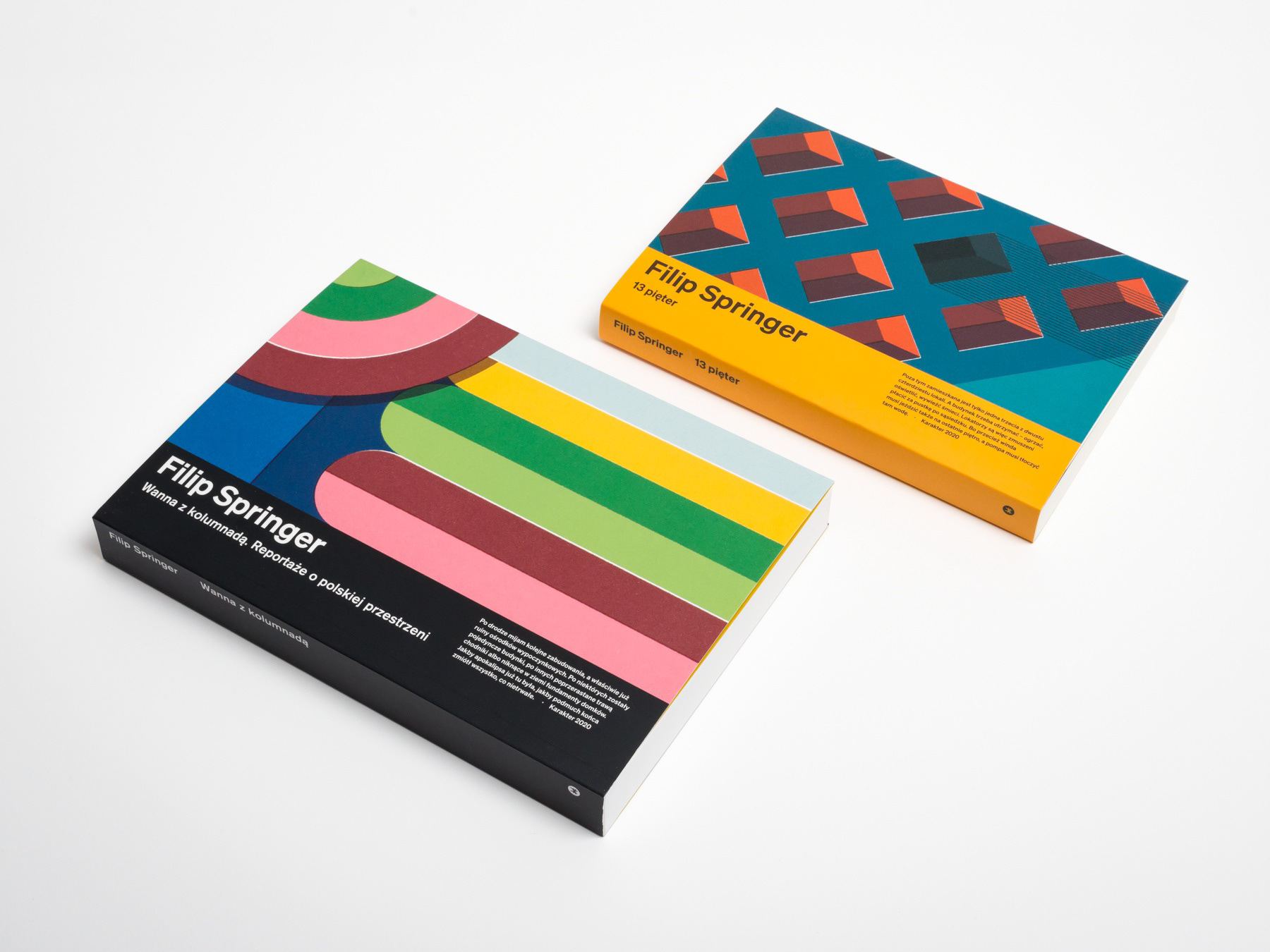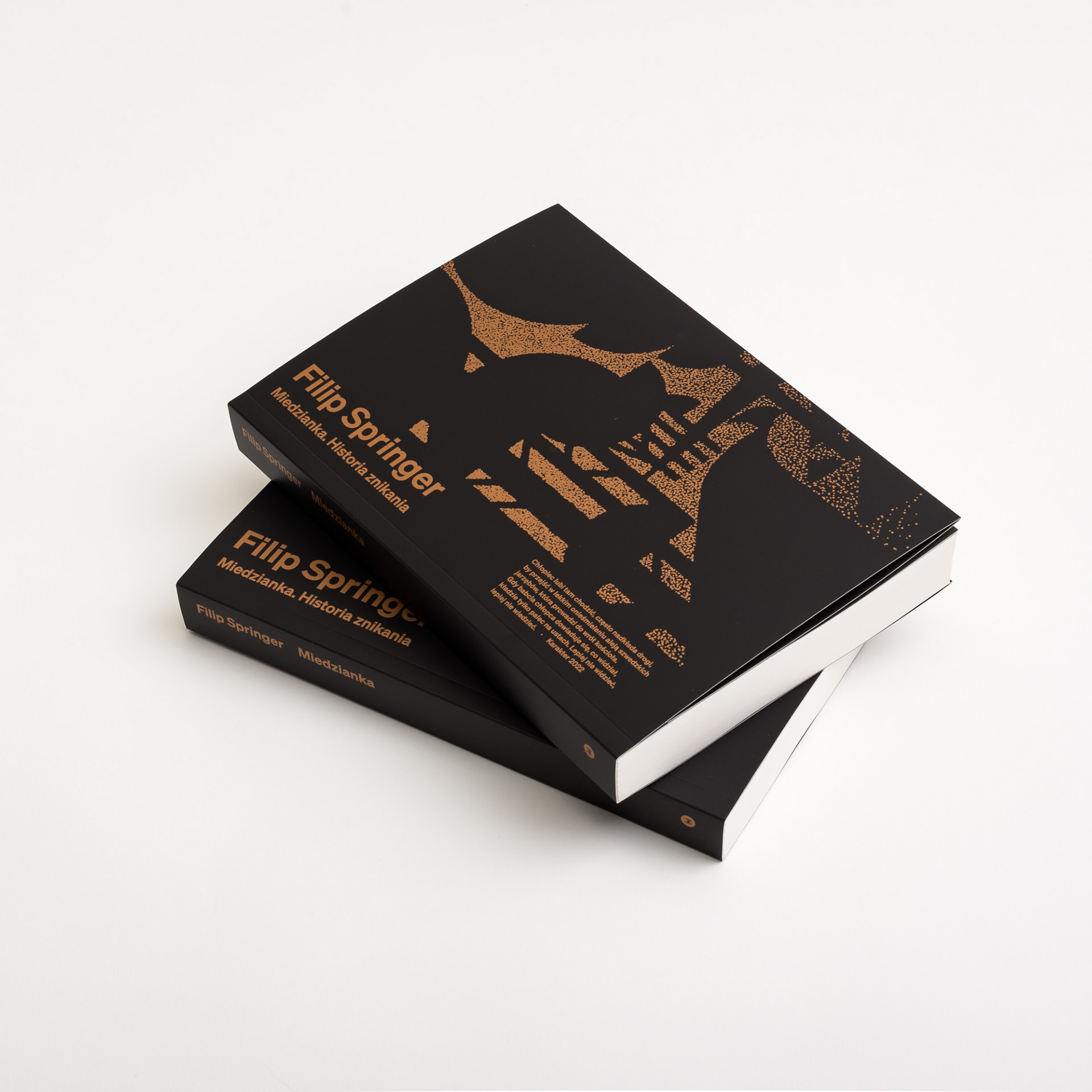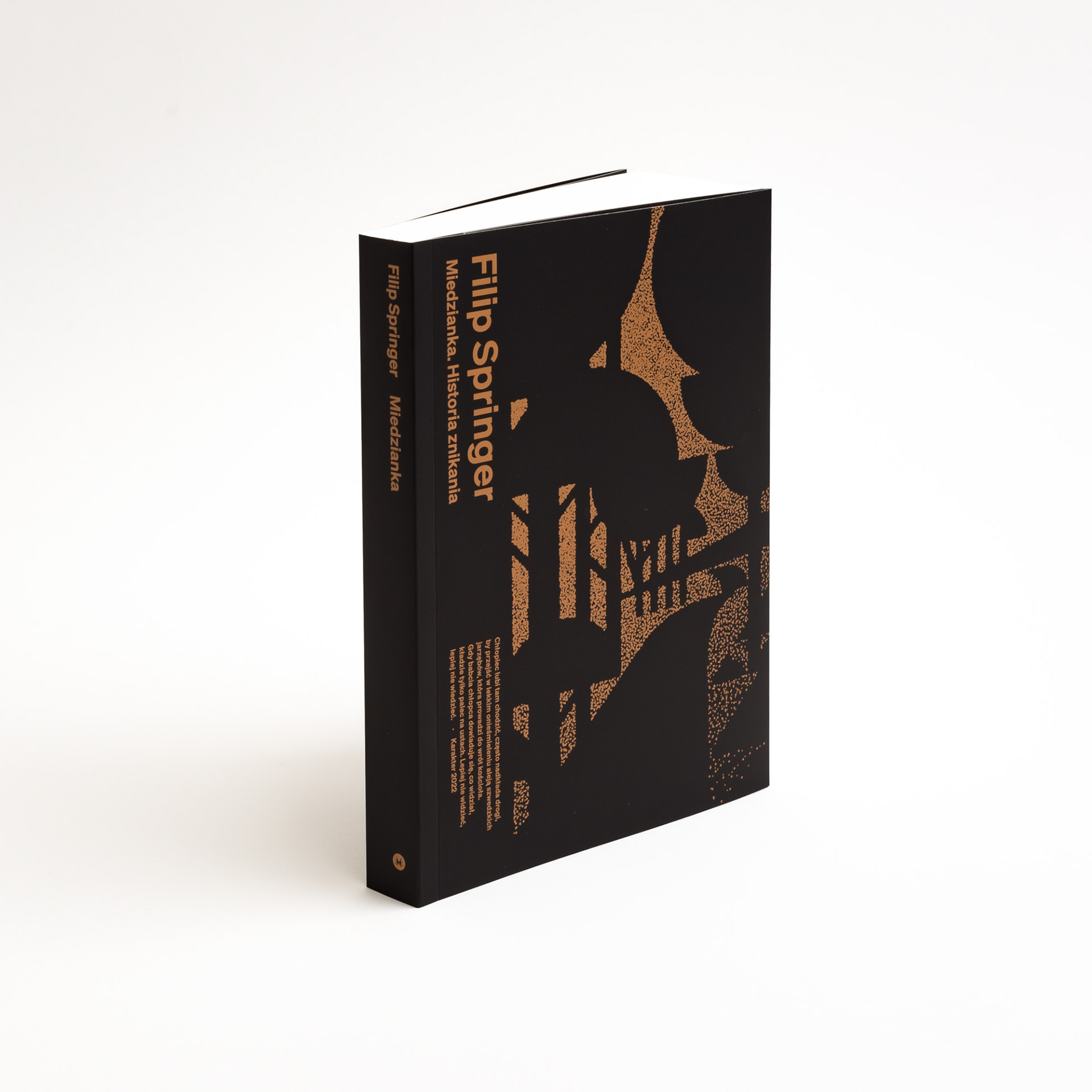I am delighted to have finally been able to design all of Filip Springer's books together. His first books took architecture as a starting point and developed into multifaceted stories of human genius and hubris. These include 13 Floors, which examines the housing crisis in Poland, and A Bathtub with a Colonnade, which explores the aesthetics of Polish cities. Springer is one of Poland's leading non-fiction writers, drawing on the treasure trove of modernist ideals: honesty, clarity, and functionality.
Year: since 2020
Page size: large format: 164×230 mm (4.3×7.1 in.), small format: 144×205 (5.7×8.1 in.)
Pages: 256–320
Paper: large format: Amber Graphic 120 g, small format: Munken Print White 15 90 g
Binding: paperback with flaps
Cover material: Arktika 250 g
Cover material: Arktika 250 g
Typefaces: Söhne, Paperback (body)

The display typeface is a modern (2021) version of the prototype of all sans serif typefaces (there were some before, but give me a break), namely Akzidenz Grotesk. Somehow it never received a decent digitisation until recently, when it was released under the name Söhne. (http://klim.co.nz).


Miedzianka tells the story of a small town in Lower Silesia that mysteriously disappeared. Despite avoiding destruction during World War II, only a few buildings remain today. Originally published in 2012 and translated into several languages, it is considered one of the most important books to come out of Poland in recent decades. The Karakter edition features an entropic cover depicting a local road near Miedzianka.


Zaczyn (The Leaven) is an extraordinary tale about Oskar Hansen, a visionary Polish architect. On the cover, I used Hansen's design for a memorial to Auschwitz, which was ultimately rejected. Hansen's design called for the camp to be left as it was, to rot and decay, with an elevated diagonal asphalt path.
Ill-Born: Architecture of Communist Poland: we published the first edition in 2012, and it has been one of our bestsellers ever since. This edition features a new cover to match the redesigned series. It was only after seeing all of Springer’s photos of old modernist Polish buildings in black and white that I realized how rich in textures this architecture truly is. There are patterns everywhere!
